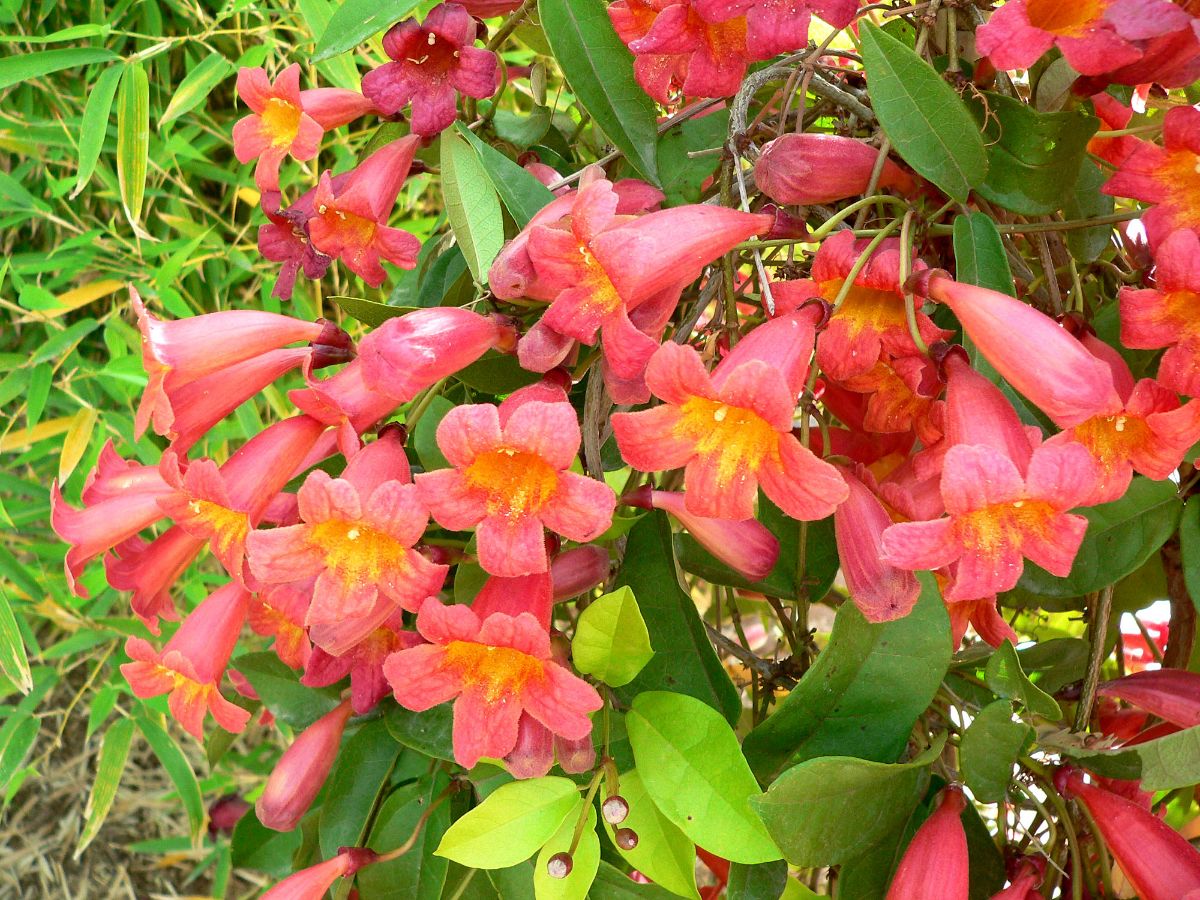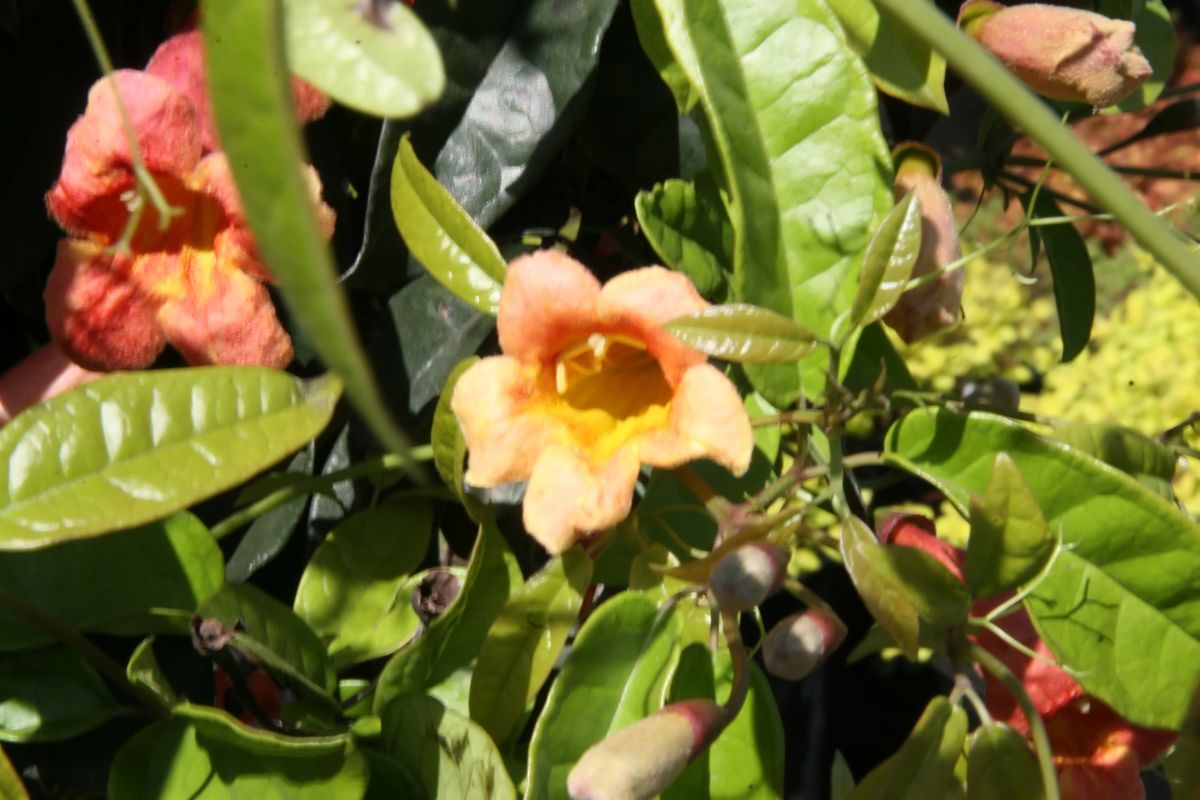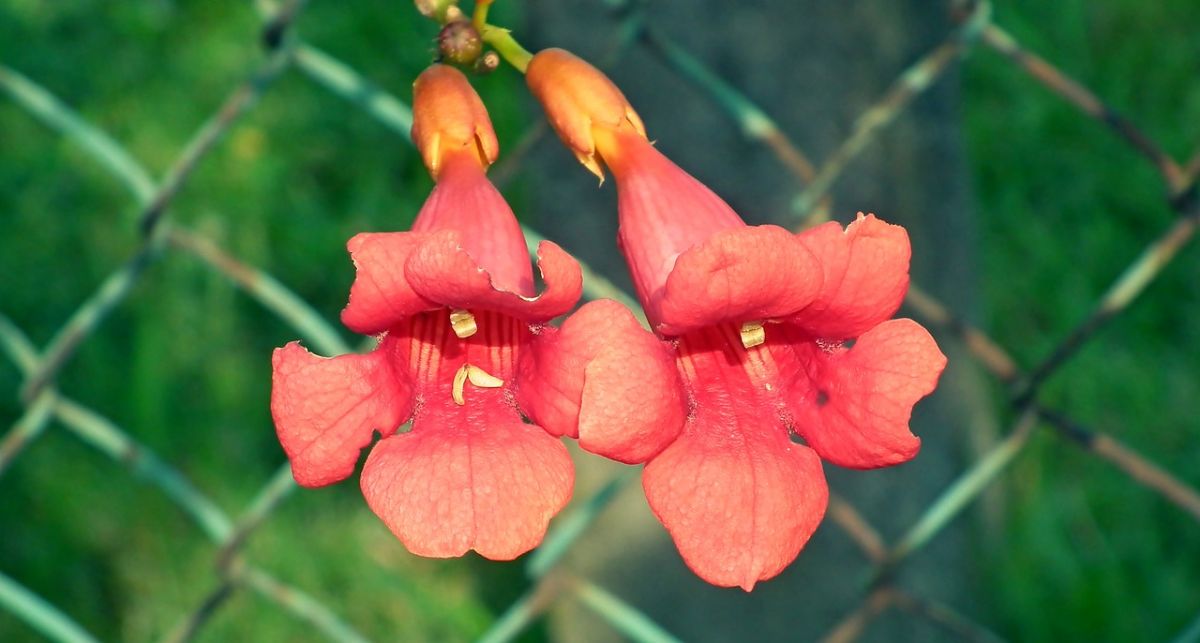
Climbing plants are of many types. But without a doubt one that, when seen, is adored, is the Bignonia capreolata. Have you heard of her?
In this article we are going to talk about how is this plant, what are its care and some curiosities about it. So pay attention. Who knows, it could be your next climbing plant.
How is the Bignonia capreolata

The first thing is to tell you about the Bignonia capreolata. Better known as climbing bignonia, it is actually a shrub that has climbing characteristics. It is semi-evergreen, but it is actually perennial. Why do we tell you two contradictory things? Because it will depend on the weather and where you place it. There are times when you can keep the leaves all year, but other times, due to the temperature, it will be a few months without them (or more peeling).
The way in which it "hooks" is through tendrils that are what this plant uses to cling vertically to the structure it can, whether it is on the wall, on the bricks or on wire. In this way it grows vertically. Now, if this hook is not provided, the plant will most likely drop its branches downwards, covering a layer of soil. That is why many choose place it in places where it can be rolled up, or put a guide or tutor on it to grow around you.
Altogether, you can reach 6-8 meters long along with a very leafy foliage, with oval green leaves (there will be darker and lighter, since as the days go by the leaves turn a darker green).
However what most characterizes the Bignonia capreolata is, without a doubt, its flowers. These are trumpet-shaped and red inside and out but the edge is orange (and it opens outwards as if it wanted to turn around). These measure between 4-5 cm and always appear in groups of between one and five flowers, all of them with five petals. After passing these in spring, they give rise to a fruit, a flat capsule that will reach 15 cm.
It is native to North America and its main use is ornamental since, between the leaves and the flowers that it throws, it is very showy in the gardens. But, for it to develop properly, it is necessary to provide it with some care. We tell you below.
Caring for the Bignonia capreolata

As we told you before, we are going to tell you what care you have to provide for it to be healthy:
Location and temperature
La Bignonia capreolata is a plant to which it loves the sun, but its exposure will depend on the location. For example, if you are in the north of Spain we recommend putting it in direct sun all the time; if you live in the south, better find a place where it enjoys the sun but also has semi-shade.
This is not because it does not tolerate high temperatures, but because the sun is more intense, it can damage it a little. In fact, it is quite resistant to temperatures, while tolerating cold down to -10 degrees and intense heat.
All the frost tolerates them if they are soft, but if these are common, it is better then to protect it to avoid the cold (not only the branches and leaves, but also the ground).
Earth
This plant needs a substrate that holds moisture, but at the same time it is draining. So we advise you to make a mixture between organic soil and a drainage such as vermiculite, perlite or akadama, depending on where you are going to place it).
Keep in mind that if it has puddles of water, the roots will rot very quickly, so you have to take care of the irrigation and the type of substrate you put on it.
Irrigation and humidity
The irrigation that he will ask you for is abundant since it likes to have moist soil, but not waterlogged, be careful. It is best to base yourself on the location and temperature, in addition to touching the ground to see if it requires water or not.
What it will require is constant humidity. Being originally from North America, needs humidity in the environment to nourish itself. You can achieve this by spraying water every day in summer (in winter if the humidity is in the environment it will not be necessary).

Subscriber
In the spring months, which are also the flowering months of the Bignonia capreolata It is necessary to give it a little fertilizer. This can be given with a organic fertilizer but keep in mind that it should be thrown around the trunk, not right on it because then it would be counterproductive.
Pruning
As a climber, and a fast growing plant, pruning will be one of your tasks. And you have to try remove parts that are dry or damaged, that they come out the way you want them to have and to get them to air between the branches.
Therefore, it is a maintenance pruning because you will have to do it throughout the year.
Of course, you can also take a drastic one, cutting from the base to rejuvenate the entire plant.
Reproduction
The multiplication of the Bignonia capreolata can be done in two different ways: by seeds or fruits or by cuttings. This second is the most used and the one that gives the best results.
The way to reproduce it with cuttings is very easy. You just have to see the part of the plant that is strongest and that is also not woody (the more woody the stem, the older it is and the less likely it is to succeed. Therefore, a semi-mature one is better.
Always cut leaving at least two leaves at the apex. You should put it in a pot with moistened soil, humidity and a constant temperature. In a matter of a few weeks it should go ahead and start to take root as you see it grow.
Now that you know the Bignonia capreolata It's time to think about whether it's the climber you'd like to have in your garden. As we have told you, it is usually used decoratively, but you can also use it on fences to cover so that the interior of your house cannot be seen from the outside (unless the branches are separated). Do you dare to cultivate it?